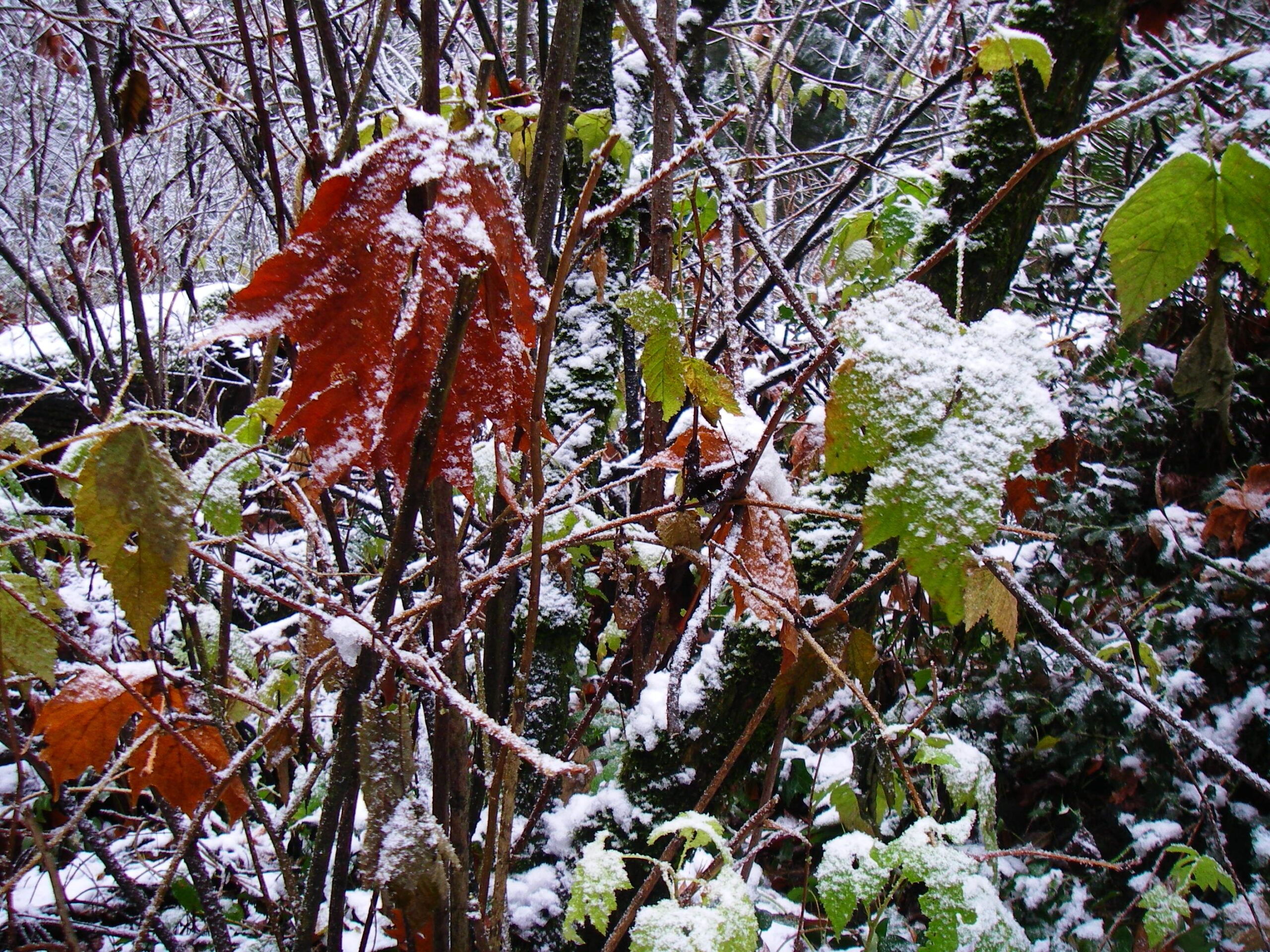The snow fell steadily almost all day yesterday — the first real accumulation this winter. There’s no forest restoration work today, but in the Puget Sound region these spells of continental weather are brief. It’s a good day to pause and think about the work for the coming year. By this time next week, the rains will have melted any lingering patches of ice, the woods will be full of the signs of spring, and the growing season will be fast upon us.
The Growing Season
February is the time of year when the dormant plants awaken, the woods start to fill with new leaves and flowers, and a frenzy of growth begins that typically lasts through June. In March and April, I want to try dividing some Inside-Out Flowers and False Lily of the Valley to fill gaps in ground cover. In May and June, I will resume my annual effort to control, at least in some areas, the annual invasives like Wall Lettuce and Herb Robert before they go to seed, remove Himalayan Blackberry from a low wetland area, and work on weed breaks around patches of Vinca and Hedge Bindweed.
The Dry Season
By July, the rainfall usually tapers off and drier weather settles in. As the soil dries up it becomes much harder to remove invasive plants without leaving the roots in the ground. I’ll continue to patrol the edges of the trails and the sunny edges, removing invasive annuals as they go to seed, but the dry season can be a good time to take some time off from forest restoration and enjoy being out in the woods while the sun is shining. Time flies by, and by late October or November the rains will return.
The Wet Season
The wet season in the Puget Sound region typically lasts from about November into February and is usually interspersed with short spells of winter weather (like the snow and freezing temperatures of the last few days). During the wet season, while the ground is saturated and roots come out more easily, I’ll get back to work on the highest priority invasive plants — Ivy, Holly, Laurel, Himalayan Blackberry, and Broom.
But today, I look ahead to the three seasons of the coming year, the growing season, the dry season, and the wet season. This brief blast of winter will only linger a few more days, and then I’ll get back to my part-time work as a forest restoration volunteer.
